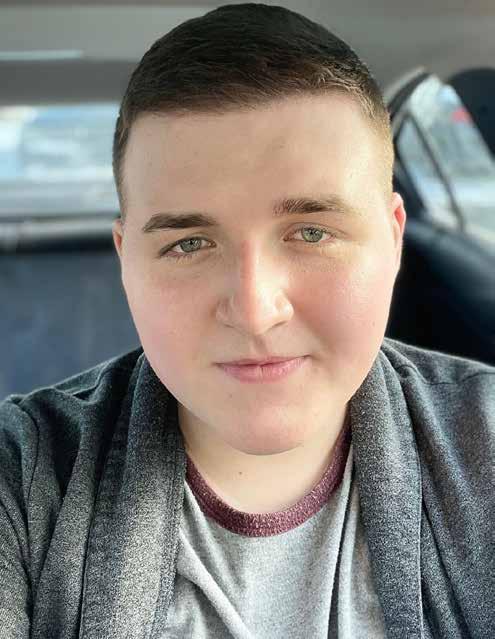
3 minute read
Understanding asexuality
ANASTASIIA FEDOROVA GAZETTE
By Anastasiia Fedorova
Modern conversations about relationships, dating and love almost always involve sex.
It seems to be an important part of life that everyone both wants and enjoys. But, what if instead of wanting to “Netflix and Chill,” some people just want to watch a movie and relax?
According to a study by Canadian psychologist Anthony Bogaert, approximately one per cent of the world’s population identifies as asexual — or “ace” for short. Asexuality is a sexual orientation that exists on a spectrum and is defined as experiencing rare, little or no sexual attraction.
Within the umbrella of asexuality there are several microlabels: demisexuals experience sexual attraction only after establishing a strong emotional bond with another person whereas graysexuals experience sexual attraction weakly or during specific circumstances. People on the asexual spectrum can be aromantic — experience no romantic attraction — or be romantically attracted to other genders. They can also be sex-positive or sex-repulsed.
If a person is asexual, it doesn’t necessarily mean that they will forever stay single or never have sex. Many people on the asexual spectrum can fall in love and are interested in dating, relationships and intimacy.
Jay, a fourth-year Media, Information and Technoculture student, says he has identified as a biromantic asexual for the last two years. While he experiences romantic feelings, he was never interested in physical intimacy. Growing up, he never had an idea of sexual attraction and thought it was odd when he first learned about it.
“I thought people were exaggerating or something. They were like ‘Oh, I had sex with this person’ or ‘I hooked up with this person.’ And I was like ‘Why would you want to do that?’” recalls Jay.
Siddharth, a second-year governance, leadership and ethics, and gender studies student, identifies as demisexual. While they have known they were on the asexual spectrum since high school, it took them a few experiences to figure out where on the spectrum they belonged.
Siddharth uses they/them pronouns.
“For the longest time, I thought I was asexual but I just didn’t feel that was [the case],” explains Siddharth. “A lot of my friends told me that I was asexual. I was like ‘Okay, this is weird. Why am I letting other people tell me what my identity is?’ And then, you know, I realized that with my partner, [the relationship] felt different than usually how it feels. So I realized that demisexual probably is closest to home.”
Siddharth explains they are not immediately sexually attracted to people. It takes time, and for them, close physical intimacy becomes desirable only after they develop strong romantic and emotional attachments.
Asexuality is often called the “invisible sexuality” because not many people know it exists and some are even convinced it’s not real. It can be challenging for people on the asexual spectrum to date and find a partner who is not overly interested in sex.
“I get worried someone’s going to be like, hear that I’m asexual and then not even give me a chance,” says Jay. In his last relationship, he remembers constantly thinking “does he want to have sex with someone? Is this bothering him? Like, should I be doing something?”
“There were some boundaries that weren’t obvious, that sometimes it was … a little ambiguous, and sometimes I felt a little uncomfortable,” adds Siddharth about their current relationship. “But gradually, I got more comfortable with different forms of being intimate.”
So, although sex seems to be an integral part of romance — especially at university — a relationship without it is completely possible.
“There was this one quote I saw on Instagram a while ago, and it was like, ‘if sex without love can exist, then love without sex can exist.’ And that really stuck with me. I think if you have a strong connection with someone, then it shouldn’t really be a huge issue,” notes Jay.






